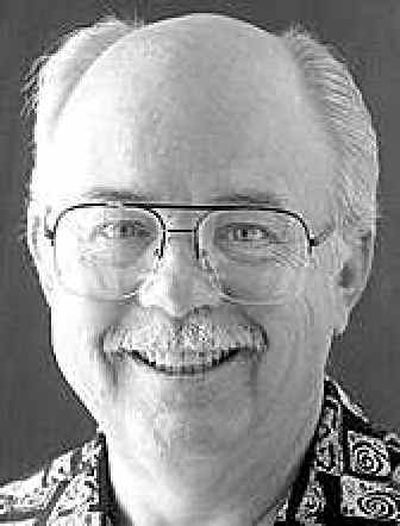Functions of prayer matter more than the forms

The first prayer I memorized as a child was, “Now I lay me down to sleep. …”
I suspect the second was The Lord’s Prayer.
My parents consistently taught me to pray at bedtime and when at Sunday school and worship. Eyes were closed, and hands were folded whether kneeling or sitting.
I learned the form of prayer well as a child.
It took a good deal longer to learn the function of prayer. Actually I still learn new functions of prayer even now, at 62.
I also keep learning about the many layers of prayer, both its forms and its function.
The learning is exciting but slightly embarrassing. It’s embarrassing because I still delude myself that at my age I should know more – much more – about prayer.
For all my years as a pastor – a “professional prayer” – I focused too much on developing the best forms of prayer. I didn’t spend enough time focused on the function of prayer.
One of our Spiritual Direction teachers at Gonzaga University asked us, “What school of prayer did you attend as a child?”
I flippantly answered, “I was at recess a lot during class.” I played it for laughs – and got them.
But my comment was partly serious. I learned the forms, but I was sometimes “absent” if we talked much about function.
The functions of prayer may not be as numerous as the forms, but in the final analysis they are more important.
I have heard – and prayed – beautifully formed prayers, but they sometimes lacked the power of their intentions. I have heard – and prayed – awkward prayers that moved me deeply.
The function, not the form, of prayer is of primary importance. To me, the primary function of a prayer’s form is to make us aware we are in God’s presence.
If the form calls attention only to itself, it has not done its job.
So what are the functions of prayer?
Lent begins Wednesday. Between now and Easter, I have four visits with you, and I want them to be about prayer. I’ll explore different forms of prayer but always come back to their functions.
Some prayers are meant for us to receive God’s wisdom of the moment. Other prayers are more active in function, meant to push us to act out the passion and compassion of our faith.
In general, that means some prayers slow us down so we can listen to God. Others move us to speak to God. Still others embolden us to walk the talk of our spiritual journeys.
So the three Lenten columns will explore prayer that listens, prayer that speaks, and prayer that acts.
Any prayer that has significance to us – from memorized formulas to spontaneous utterances – involves a basic movement. We are moved from the fringes of prayer to the core of prayer.
I suspect much of what we label as prayer lingers around the fringes. We “play at prayer,” offering holy lip service, if you will.
That’s actually the place we need to start. It’s only when we stay on the fringes that prayer becomes lifeless and perhaps useless (at least to us – I don’t pretend to speak for God).
Vital prayer will move us from the superficial edges of our distracted lives into an inner space where we can focus more on listening for God and less on working out our grocery list. Perhaps one of the biggest challenges we put on ourselves is to take the time we need to move us from the fringe of our lives to the very core of our lives.
If we remain committed to a hurry-up, fragmented life, then we will struggle with prayer. Prayer is not intended to be an appendage of life but the force that actually moves our life.
John Killinger reminds us that “Jesus himself was clearly a man of prayer. He lived in constant communication with his heavenly Parent. Prayer was as natural to him as eating, or breathing, or sleeping. … It drove his life, the way an engine drives a ship, and kept him going in his ministry when a person with less motivation might have abandoned everything. …” (“The Greatest Teachings of Jesus,” Abingdon Press, 1993)
We will not perfectly imitate Jesus in his commitment to prayer as the “engine” that drove his life. But we can decide to do our utmost to focus on becoming more aware of God’s presence in both the chaos and the clarity of our lives.
It will be in those moments that prayer will show its greatest power in our lives.